I want to make a simple circuit that when you press a pushbutton, an LED lights up stays lit until the button is pressed again. I haven't delved into interrupts yet on AVR, and was wondering whether it is possible to do in a while loop.
This is my code:
#include <avr/io.h>
#define INPUT (1 << PINB3)
#define OUTPUT (1 << PINB0)
int main(void)
{
DDRB = 0x00; //everything input
PORTB = 0x00; //no pud
DDRB |= 0x1; //PB0 is an output
PORTB = 0x00; //PB0 is low and PUD is off
uint8_t prev = PINB;
while(1)
{
if ((prev & INPUT) < (PINB & INPUT)) { //rise edge
if ((PORTB & OUTPUT) == 0x0) { //if output was low
PORTB |= OUTPUT; //make output high
} else {
PORTB &= ~OUTPUT; //make output low
}
}
prev = PINB;
}
}
The switch only partially works, I'm guessing because of the nature of the while loop and it storing the previous input really fast.
I believe the problem lies in my method of detecting a rising edge of the push-button. What would be a better method?


